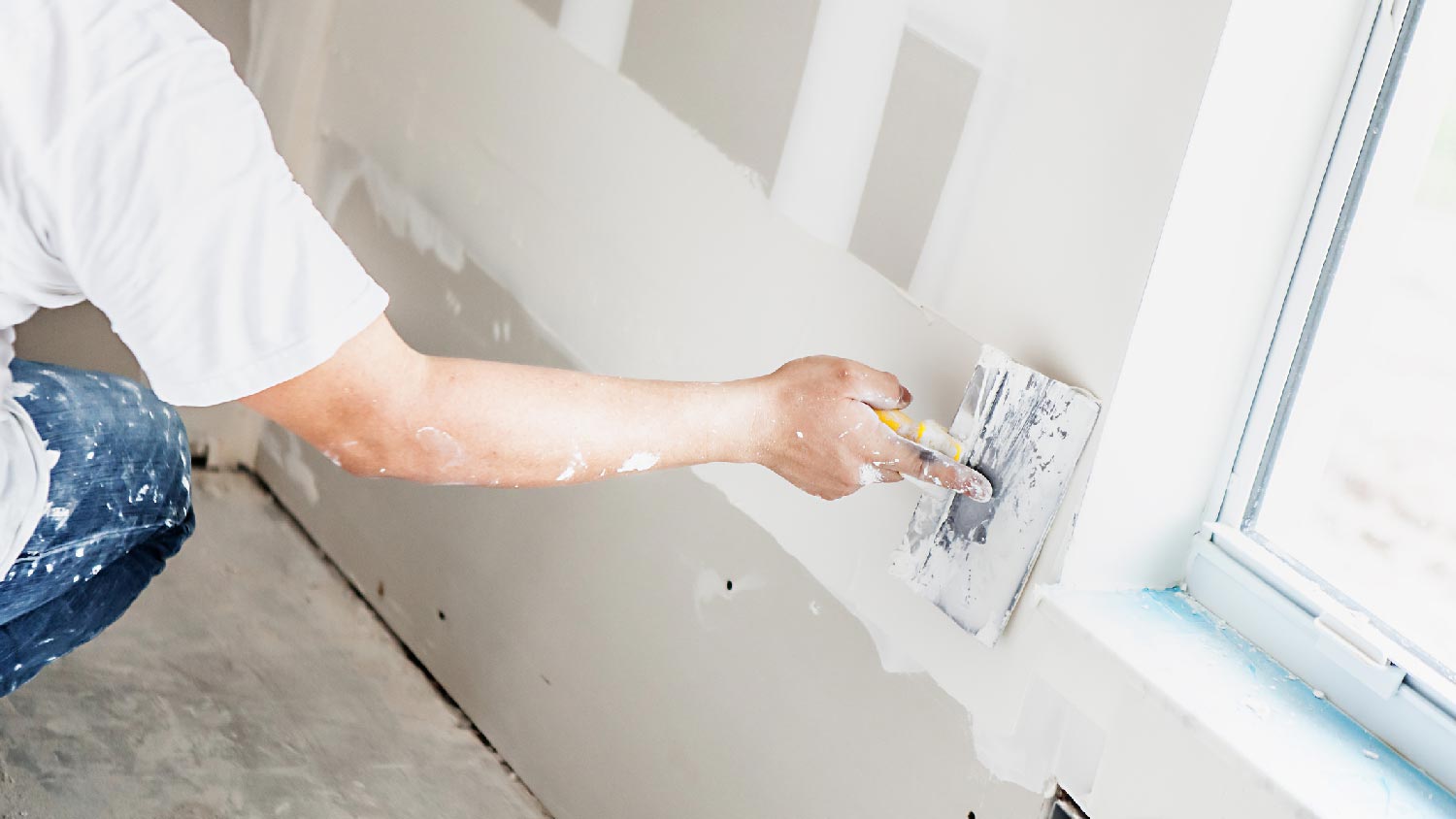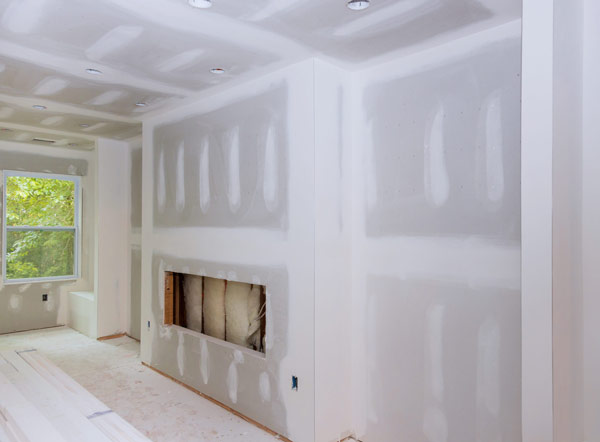A Comprehensive Guide to Learning Drywall Fixing and Installment
This guide uses a detailed expedition of drywall repair work and setup, catering to both newbies and skilled professionals. It describes vital devices, techniques for patching and hanging sheets, and the critical finishing processes. Drywall Installation Ogden Utah. By recognizing usual risks, individuals can attain sleek results. Understanding these abilities not only boosts one's home but additionally constructs confidence in DIY ventures. What foundational tips will assure a successful task from beginning to end?
Essential Tools for Drywall Fixing and Installation
When starting on drywall repair service and setup, a couple of vital tools can considerably boost the performance and quality of the work. A drywall knife, generally available in various sizes, is essential for using joint compound and smoothing joints. A taping blade is also necessary for feathering edges and ensuring a smooth finish. In addition, a drywall saw or utility blade enables accurate cutting of drywall sheets to fit any space.

Step-by-Step Guide to Patching Holes
Covering holes in drywall is a simple procedure that can bring back the wall surface's appearance and stability. To start, the location around the opening must be cleaned and any loosened debris got rid of. For small holes, a simple spackle or joint substance can be used with a putty blade. Larger holes might need a spot; a piece of drywall can be cut to fit the opening, protected with sticky or screws, and after that taped around the sides. When the spot is in location, joint substance is applied over the patch and feathery out to mix with the bordering wall surface. After the compound dries, fining sand is necessary to achieve a smooth coating. The repaired location can be keyed and painted to match the rest of the wall surface. This approach guarantees a seamless repair work, boosting the overall appearance of the drywall and maintaining its structural stability.
Strategies for Hanging Drywall Sheets
After efficiently repairing holes in drywall, the following action includes hanging brand-new drywall sheets to develop a smooth surface area. To achieve this, one should start by determining the wall surface space accurately and cutting the drywall sheets to fit. It is essential to hang the sheets flat for far better architectural integrity, beginning from the top and functioning downwards.
Making use of a drywall lift can streamline the process, especially for ceiling setups. When positioned, safeguarding the sheets with drywall screws at periods of concerning 12 inches along the edges and 16 inches in the area is important. This guarantees a firm hold and minimizes the threat of sagging. For edges, the sheets ought to be cut to fit snugly, permitting cleaner joints. Lastly, it is advisable to startle the joints in between sheets to strengthen the total structure, producing a much more long lasting coating prepared for the next stage in the drywall installation process.
Finishing Touches: Insulation and Mudding
Finishing the drywall installation includes the important steps of mudding and taping, which guarantee a smooth and polished coating. Taping requires the application of joint tape over the joints in between drywall sheets. drywall contractor. This tape can be either paper or fiberglass harmonize, with each kind offering one-of-a-kind advantages. After taping, the following step is mudding, where joint compound, or "mud," is related to cover the tape and load any flaws
Using a drywall blade, the compound needs to be spread equally, making certain a feathery side to minimize noticeable changes. Multiple layers are frequently essential, with fining sand in between each layer to accomplish a smooth surface area. Mindful attention during this procedure is crucial, as it considerably impacts the final appearance of the wall surface. With the right strategy and patience, the end result will be a remarkable structure ready for painting or ending up touches.
Typical Mistakes to Stay Clear Of in Drywall Projects

An additional common blunder is not enabling sufficient drying out time in between coats, which can catch wetness and endanger the surface. Neglecting to feather the sides effectively can create noticeable lines and blemishes. Lastly, avoiding sanding or making use of incorrect strategies may leave harsh spots. By recognizing these pitfalls, individuals can considerably improve the quality of their drywall projects and accomplish a professional-looking coating.
Frequently Asked Questions
Can I Fix Drywall Without Professional Help?
Yes, one can repair drywall without professional aid. With the right tools, products, and assistance, individuals can effectively handle small repair services. However, substantial damages might require specialist expertise for excellent results and sturdiness.
How Much Time Does Drywall Substance Require To Dry?
Drywall compound normally takes in between 24 to two days to dry completely, relying on elements such as humidity and temperature. Thinner layers might dry out quicker, while thicker applications call for even more time for perfect outcomes.
What's the most effective Type of Paint for Drywall?
The most effective kind of paint for drywall is generally a water-based latex paint. It supplies superb coverage, sturdiness, and simplicity of application, making it optimal for indoor wall surfaces while permitting very easy cleanup with soap and water.

Exactly how Do I Protect Against Mold on Drywall?
To avoid mold and mildew on drywall, guarantee proper ventilation, control humidity degrees, make use of mold-resistant products, and quickly deal with any leakages. Routine examinations and immediate removal of water damage are also essential for long-term avoidance.
Is Drywall Recyclable After Removal?
Drywall is recyclable after removal, gave it is complimentary from pollutants like mold, paint, or other hazardous materials. Recycling centers can process it right into new items, advertising sustainability and reducing land fill waste in construction.
When beginning on drywall fixing and installation, a few essential devices can considerably improve the effectiveness and quality of the job. After efficiently fixing openings in drywall, the following action includes hanging brand-new drywall sheets to develop a seamless surface. Finishing the drywall installation involves the crucial actions of mudding and taping, which assure a polished and smooth finish. Accomplishing a refined coating in drywall jobs can be tough, and several typical mistakes can threaten the high quality of the work. Yes, one can fix drywall without website professional assistance.